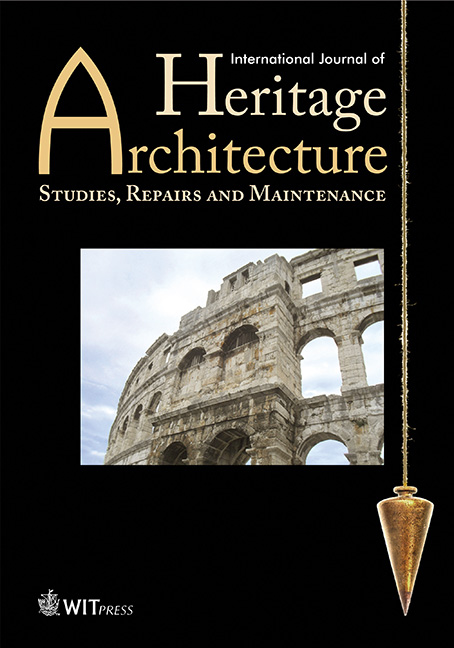DEFENCE HERITAGE IN A STATE OF RUIN: THE ARCHAEOMETRIC STUDY OF ‘DELLA FAVA’ CASTLE IN SARDINIA (ITALY)
Price
Free (open access)
Volume
Volume 1 (2017), Issue 2
Pages
9
Page Range
237 - 246
Paper DOI
10.2495/HA-V1-N2-237-246
Copyright
WIT Press
Author(s)
C. GIANNATTASIO, S.M. GRILLO, E. PILIA & M.S. PIRISINO
Abstract
Defence heritage has always had a dominating presence in the landscape. It speaks of the passing of time in various countries, and it is a witness to a complex system of relationships between fortified architecture and documenting local materials and techniques. Innumerable researches have been carried out to study these ruined structures frequently without evaluating their valuable chronological role of ‘benchmark’ in the landscape. In Sardinia these studies, principally related to the dating, history and evolution of this heritage, are complicated by the lack of documented sources and by the small number of castles and ruins still available. The present research contributes to more insight in this field, reflecting on the study of medieval fortified heritage, which is in a state of ruin in north-east of Sardinia (12th–13th centuries), and it proposes an interdisciplinary protocol of research for this architecture. The object is the investigation of the ‘della fava’ castle (Posada), which represents one of the most important defensive architectural systems on the coast. Its structures have been studied in depth through a series of archaeometric analyses, based on surveys, typological, architectural and construction techniques, as well as petro-mineralogical inspection, with the purpose of reconstructing dimensional, material and constructive aspects of the traditional masonry techniques. This article allows to achieve two different aims: (1) to understand how a structure is made and consequently to define the correct conservation and design project; and (2) to identify typological and dimensional constants that referred to a specific geological context and period; these constants can be a useful tool for comparing and dating coeval structures, such as ‘minor architecture’, that are difficult to date.
Keywords
chronologies, fortified system, masonry techniques, ruins




